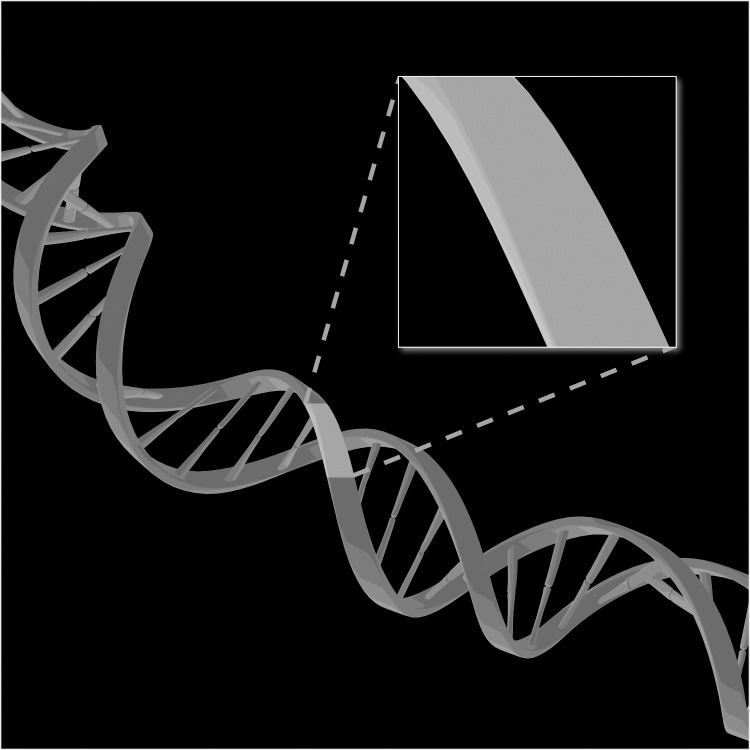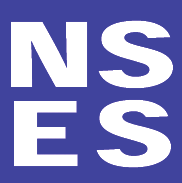• 1 meter stick
Step 5
• 1 rubber band from dish A (nonstretched)
• 1 paper clip
2
• 1 soda can containing about 2 ounces of water (or other
2–3-ounce weight)
Instruct pairs to record in their notebooks
Page 82
• the question they are investigating and
Step 6
• how far down the meter stick the rubber band stretched.
Collect the rubber bands. Give each pair a rubber band from dish B
Page 82
(previously stretched), and instruct pairs to make and record
Step 7
measurements as before.
Ask volunteers to report their conclusions. Did the two rubber bands
Page 83
perform differently and if so, how?
Step 8
3
Explain that the rubber band from dish A (nonstretched) represents
Page 83
normal connective tissue. Ask,
Steps 9 and 10
• “What do you think the rubber band from dish B represents?”
• “How might looser connective tissue affect the body?”
Explain that now they will investigate whether Patrick has a rare
Page 83
disease affecting his connective tissue.
Step 11
4
5
Lesson 3
93
Activity 3: A Common Thread
Estimated time: 50 minutes
Page and Step
Remind students that Patrick’s symptoms involve more than one body
Page 83
system and seem to have connective tissue in common. They will
Step 1
decide which, if any, rare disorder of connective tissue Patrick may
have.
Arrange the class in pairs. Give each pair a copy of Master 3.8 and Page 84
Master 3.9. Instruct students to use information on Master 3.9 to Steps 2-p
complete Master 3.8.
and 3-p
Ask volunteers to report their conclusions.
Page 84
Step 4
Agree that Marfan syndrome best explains for Patrick’s symptoms. Ask,
Page 85
• “What is the cause of Marfan syndrome?”
Step 5
• “What evidence is there to suggest that Patrick may have Marfan
syndrome?”
Explain that students will look on a handout for evidence of Marfan
Page 85
syndrome in Patrick’s family and record in their notebooks what they
Step 6-p
find. Give each student pair a copy of Master 3.10.
Remind students of the three major causes of disease. Ask,
Page 86
• “Did you find any evidence of Marfan syndrome in Patrick’s family?”
Step 7
• “Is there evidence to suggest that Patrick’s symptoms may have a
different cause?”
Explain that an early diagnosis of Marfan syndrome allows people to
Page 86
take steps to protect their health. Ask, “In what ways might having
Step 8
Marfan syndrome affect your life?”
Conclude by explaining that students will now consider how Marfan
Page 87
syndrome affects the lives of people who have it. Ask students to write Step 9-p in their notebooks
• one question they would like to ask a doctor about Marfan
syndrome and
• one way they think having Marfan syndrome might affect their lives.
Ask volunteers to report what they wrote.
Page 87
Step 10-p
Display Master 3.11, and give students time to read it. Ask,
Page 88
• “Were the questions and comments from the young people on
Steps11-p
the master similar to yours?”
and 12-p
• “How would you want to be treated by your classmates if you
had Marfan syndrome?’
= Involves making a transparency.
= Involves copying a master.
94
Rare Diseases and Scientific Inquiry


Lesson 4
The Importance of Medical Research
1
2
Elaborate
At a Glance
Overview
Lesson 4 introduces the idea that medical research is important for the 3
treatment of a rare disease, childhood leukemia. In the first activity, students meet Jason and Kim, parents of a daughter named Hanna,
who has been diagnosed with childhood leukemia. Students perform a
simulated Web search to learn about the disease. They must sift through different Web hits to find relevant and accurate information about the
disease. In considering a genetic cause of the disease, students perform a karyotype analysis on each family member. In the second activity, students are introduced to treatments for leukemia. They design a clinical trial to guide the treatment of the disease. Finally, students watch a brief video (or, for classes using the print version, act out an interview) of a leukemia 4
survivor discussing what it’s like to live with the disease.
Major Concepts
• Much medical information can be found on the Internet; however, this
information must be examined carefully to assess its relevance and
accuracy.
• Lack of appearance in a family history does not mean that a disease
doesn’t have a genetic cause.
• Leukemia is a cancer of the white blood cells.
• Clinical trials have greatly improved the survival rates of children with leukemia.
5
95
Objectives
After completing this lesson, students will
• have used a simulated Web search to learn about the cause, symptoms,
and diagnosis of childhood leukemia;
• have performed a karyotype analysis to diagnose leukemia;
• have designed and tested a clinical trial for treating childhood leukemia; and
• have considered the challenges associated with living with leukemia.
Teacher Background
Consult the following sections in Information about Rare Diseases and
Scientific Inquiry:
2.0 The Impact of Genomics on Rare Diseases (pages 24–27)
3.0 Rare Infectious Diseases (page 26)
4.0 Rare Diseases Caused by Environmental Toxins (pages 27–28)
5.3 Childhood Leukemia (pages 31–33)
In Advance
Web-Based Activities
Activity
Web Component?
1
Yes
2
Yes
Photocopies, Transparencies, Equipment, and Materials
Photocopies and Transparencies
Activity 1: An Unwelcome Diagnosis
For Classes Using the Web-Based Activity:
1 transparency of Master 4.1
1 copy of Masters 4.2 and 4.5 for each student
1 transparency and 1 copy for each student of Master 4.3
1 copy of Master 4.4 for each pair of students
For Classes Using the Print-Based Activity:
1 transparency of Master 4.1
1 copy of Masters 4.2, 4.5, 4.11, and 4.12 for each student
1 transparency and 1 copy for each student of Master 4.3
1 copy of Masters 4.4 and 4.10 for each pair of students
Continued
96
Rare Diseases and Scientific Inquiry

Photocopies and Transparencies
Activity 2: Clinical Trials
For Classes Using the Web-Based Activity
1 transparency of Master 4.6
1 copy of Masters 4.7, 4.8, and 4.9 for each pair of students
1
For Classes Using the Print-Based Activity:
1 transparency of Master 4.6
1 copy of Masters 4.7, 4.8, 4.9, 4.13, 4.14, 4.15, and 4.16 for each pair of students
2 copies of Master 4.17 for the class
Equipment and Materials
For Activities 1 and 2, Web-based versions, students will need computers with Internet access.
2
Preparation
Activities 1 and 2
For classes using the Web version, verify that the computer
lab is reserved for your class or that classroom computers
are set up for the activities.
Refer to Using the Web Site for details. Check that the Internet
connection is working properly.
3
Log on to the Web Portion of Student Activities section at
http://science.education.nih.gov/supplements/rarediseases/student
Select “Lesson 4: The Importance of Medical Research.”
Procedure
Note: This is an Elaborate lesson. It gives students an opportunity to take 4
what they have learned about rare diseases and scientific inquiry from
the previous lessons and apply it in a new setting. In the first activity, students place themselves in the role of a parent whose child has just
been diagnosed with childhood leukemia. They perform a simulated Web
search to learn about the disease. This activity is designed to help students hone their skills in evaluating information for relevance and accuracy.
The genetic link to the disease is made real to students by having them perform a simple karyotype analysis.
In the second activity, students exercise their understandings of scientific 5
inquiry in the context of clinical trials. Designing a fair test is a common Lesson 4
97

inquiry skill. We selected childhood leukemia because it is a rare disease that has a genetic cause. It’s a serious disease, but, at the same time, it represents a real success story in the application of medical research to treatment.
The activity includes a graph that shows how survival rates for children with leukemia have dramatically improved over the past few decades. The lesson concludes with a video (or a role-play) of a young woman who has come through treatment for the disease and is now pursuing a medical
education. The inclusion of this story is designed to give students an
opportunity to empathize with someone who has had leukemia and also to
leave them with the vision of a positive outcome.
Activity 1: An Unwelcome Diagnosis
Estimated time: 100 minutes
1.
Begin the lesson by explaining that students will investigate a
case study involving a child with a rare disease.
This case study introduces the use of clinical trials to obtain
evidence about which treatment options are most effective. It’s
not important that students understand the clinical trials process.
Instead, clinical trials provide a real-life example of how the practice of science (especially proper experimental design) can help improve
people’s health.
2.
Display Master 4.1, Doctor Visits. Ask for volunteers to read aloud each section of text.
3.
Ask students how they would feel if they were Hanna’s parent
and received this disturbing news. Ask, “What would you
Content Standard C:
do now that you have learned that your daughter has been
diagnosed with leukemia?”
Disease is a
breakdown in
Students’ responses will vary. Some students may suggest getting a
structures or functions
second opinion. Others may suggest researching cancer treatment
of an organism. Some
centers. Accept all answers and guide the discussion to the need to
diseases are the result
obtain more information.
of intrinsic failures of
the system. Others are
4.
Explain that although the doctor described childhood
leukemia and answered their questions during the office
the result of damage
visit, Jason and Kim were so upset that they didn’t take notes
by infection by other
or remember much of what they were told. After returning
organisms.
home with Hanna, they performed an Internet search on
leukemia.
98
Rare Diseases and Scientific Inquiry
5.
Ask students,
• “If you were Hanna’s parent, what information would you
want to have about the disease?”
• “Where could you find the information that you want?”
Make a list on the board of the types of information about leukemia
the students request. Students may mention a variety of sources
1
for this information, including their doctors, books, television
programs, the Internet, and, possibly, friends and family who have
had to cope with the disease.
6.
Give each student one copy each of Master 4.2, Internet Search
Results, and Master 4.3, Evaluating Internet Search Results.
Instruct students to view the list of hits on Master 4.2 and
follow the instructions on Master 4.3 to rank the hits from most
helpful to least helpful.
2
This step is designed to challenge students to sort through
information related to leukemia and decide
• which hits are most likely to contain the information they want
and
• which hits are likely to contain information that is accurate and
unbiased.
There is no single correct answer to ranking these eight hits. Rather,
you should see whether students can sift through the lists to identify
one or two of the best hits. Likewise, students should be able to
identify another couple of hits as clearly not helpful to providing the 3
information they want.
In this activity, students are ranking hits based on relevance and
accuracy. There are, however, other criteria that students should
use to assess the usefulness of Web sites. For example, the site
should present information that is up to date, and the information
should be as free of bias as possible, such as the bias associated with promoting a product or service.
Answer key for Web hits on Master 4.2, Internet Search Results
4
1. Federal Center for Cancer Research
Information about leukemia, its causes, symptoms, diagnosis,
and treatment …
Hit 1 is from a fictional U.S. government research organization,
the Federal Center for Cancer Research. The Federal government,
however, does support medical research, primarily through the
5
Lesson 4
99
National Institutes of Health (NIH). For example, the Office of
Rare Diseases Research (http://rarediseases.info.nih.gov/) and the
National Cancer Institute (http://www.cancer.gov/) are parts of
NIH and provide accurate medical information resources for the
general public. Such government sites post information that has
been reviewed by experts and is labeled “no commercial bias,”
which means that the information presented hasn’t been selected to
promote the use of any particular product or service. Such sites are a logical place to begin to learn about a rare disease.
2. My Leukemia Blog
Living with Cancer: Reflections and remembrances of a cancer
survivor …
Personal blogs can provide a window into the life of someone
who has a rare disease. The person may or may not choose to
include medical information as part of the blog. Furthermore, any
medical information on the blog may reflect a possibly incomplete
understanding by the author. Although such blogs can be helpful
resources, they are not the best place to begin to learn about a rare disease.
3. The Cancer Research Center at Lincoln State University
Breast cancer, Prostate cancer, Leukemia, Lymphoma, …
Research centers based at universities often provide medical
information to the public. The information is reviewed by experts
for accuracy. Often, the posted information is tied to the research interests of individual scientists and may be too specific to be a
starting point for searching about a rare disease.
4. Information about Leukemia from the American Blood
Cancer Society
Cells of the blood, Stem cells and leukemia, White blood cells
and bacteria …
Hit 4 is from a patient support group. Although the American Blood
Cancer Foundation is fictional, a large number of patient-support
organizations exist to promote medical research and support for
people with rare diseases. In the case of leukemia, the Leukemia
and Lymphoma Society (http://www.leukemia.org/hm_lls) is a very
useful resource that provides reliable disease information as well as a variety of patient services. Such sites are a logical place to begin to learn about a rare disease.
100
Rare Diseases and Scientific Inquiry

5. Leukemia—Medhealthopedia: The Do-It-Yourself Encyclopedia
Leukemia is a form of cancer that is …
Medhealthopedia is a fictional Web site that provides medical
information to the public in a manner similar to Wikipedia. On
such a site, the information posted is written collaboratively by
users of the site. The information is often reliable, but there is
1
no assurance that experts have reviewed it or that it is free of
commercial bias.
6. Cancer drugs for less! Leukemia
Order drugs from overseas to treat leukemia and save!
Hit 6 is included as a reminder that some information about disease on the Internet is more concerned with making money for someone
than with providing objective medical information.
2
7. Fed approves new drug to treat leukemia
Medical Business Weekly (Washington, DC)—The Food and
Drug Administration today approved Hamilton Pharmaceutical’s
As students report
drug Arresta for the treatment of leukemia …
how they ranked
the hits from the
Hit 7 is from a business publication. Although the information is
likely to be accurate, it only describes one specific development in simulated Web
the field of leukemia research and is not a good place to begin to
search, you have
learn about the disease.
an opportunity to
assess how well they
8. Leukemia: Definition from Medical Jargon.com
3
use their critical-
Leukemia—A form of cancer involving the white blood cells.
thinking skills to
White …
evaluate information
Hit 8 comes from a medical dictionary and only provides a brief
for its relevance and
definition of the disease.
accuracy.
7.
Display Master 4.3. Ask for volunteers to report how they
ranked the Web hits.
Students’ responses will vary. Allow several volunteers to report
their rankings with explanations of their reasoning. Remember
4
that the precise ranking of the Web sites is not important. Ideally,
students will recognize that Hits 1 and 4 are the best places to begin
to learn about leukemia. Hits 2, 3, and 5 can also be useful, but the
information may not be as relevant or as accurate as that from Hits
1 and 4. Some students may reason that Hit 8, which provides a
definition, is a good place to start. Hits 1 and 4, however, will also
provide a definition along with a lot of other useful information.
Hits 6 and 7 are clearly not very useful.
5
Lesson 4
101

In classrooms using the Web version of the activity:
8-w. Arrange the students in pairs. Give each pair
one copy of Master 4.4, Summarizing Information
a









